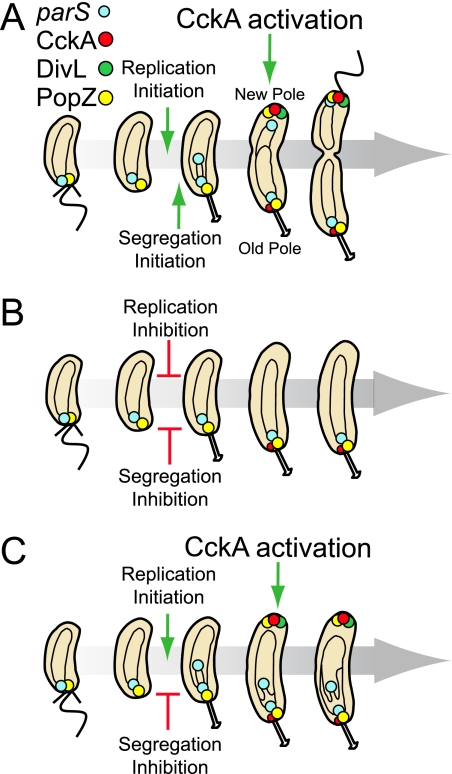FIG. 6.
Initiation of DnaA replication controls new pole remodeling and CckA kinase activation required for cell cycle progression. (A) Schematic of the Caulobacter cell cycle in a wild-type strain. The flagellum-bearing swarmer cell possesses a single chromosome (black circle inside the cell), and its centromere-like parS sequence (blue circles) is positioned at the old cell pole. As soon as parS is replicated, a copy is moved rapidly to the new pole. Following replication initiation, DivL (green circles) localizes at the new cell pole, where it interacts with and activates the newly arrived CckA kinase (red circles). The accumulation of the PopZ polar localization factor (yellow circle) at the new pole is dependent upon replication initiation (4). (B) If DNA replication is inhibited, DivL and CckA fail to localize to the new pole, and CckA fails to be autophosphorylated and activated. (C) If the segregation of parS, but not replication initiation, is delayed in an inversion strain or if segregation, but not replication, is aborted in a strain expressing a parA(K20R) allele, PopZ and CckA still localize to the new pole, and CckA is activated by phosphorylation in a DivL-dependent manner.

